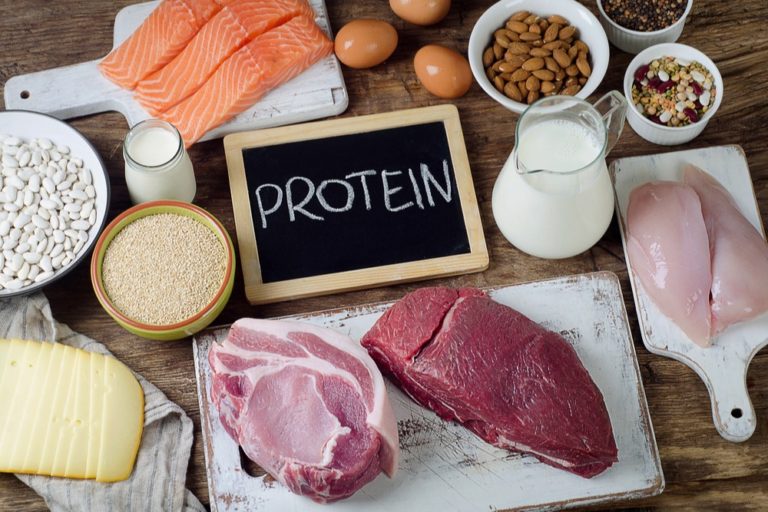Ageing is defined as the process of becoming older. We all know the feeling of getting older, but what is the biological process? Well, we’ve not fully got to grips with it yet, but we’ve got some pretty good ideas; for better and for worse.
Let’s take a look.
The Biology of Ageing
Cells are thought to have a finite number of times they can replicate and divide. Like a chicken is born with the number of eggs they will ultimately lay, the Hayflick limit suggests that a normal cell has a limit and when it has reached that limit, it cannot divide anymore and will break down by programmed cell death. It is this limited capability that we see as ageing.
This programmed cell death usually occurs when telomeres (protective structures found at both ends of chromosomes) reach a critical length. It is therefore considered that telomere length serves as a sort of biological clock.
It seems that certain lifestyle factors can influence telomere length – for example better dietary choices have been seen to prevent excessive shortening (older before your time concept).
Telomere shortening occurs at every DNA replication – so if there is an increased need for cell replication, they will become shorter. In areas of the body that have a high turnover of cells like the liver, gastric cells, or skin, it’s easy to see why these are the first places that “age!” This is also why smoking is the biggest contributor of ageing – the damage caused, increases the need for new healthy cells, and so the limit is reached sooner.
Shorter telomeres can also induce genomic instability and as we know, this is the leading factor in cancer. Cells have planned programmes to divide, replicate and ultimately die (apoptosis) and they get these messages from our genes. When genes are unstable, their messages get a little muddled and so the cells go rogue – dividing and replicating, but not dying – this aberrant growth is implicated in cancer.
What Can Cause Shortened Telomeres?
Telomere shortening is a natural part of life, but as we’ve noted there are things can expedite this process.
In those who are exposed to air pollution on a regular basis, their telomeres were found to be significantly shorter. This again is largely due to the genotoxic capacity of air pollution, leading to DNA instability.
Stress is also associated with increased telomere shortening and subsequent ageing. In one study, women who were exposed to daily stress exhibited shorter telomeres than those who were not. The change in telomere length was the equivalent to 10 years of ageing.
Diet can also affect telomeres.
- A diet contain omega-3 fatty acids is associated with a reduced rate of telomere shortening,
- Consumption of a diet including Vitamin E and Vitamin C is associated with longer telomeres.
- Dietary restriction reduces oxidative burden, reducing damage to DNA and is therefore regularly associated with improved lifespans. The note here is restriction and not starvation.
That said, it is still important to ensure sufficient nutrients, particularly to maintain lean body mass. Muscle loss is common as we age, therefore a moderate protein intake is essential.
Protein
Proteins are the building blocks of the body. The word comes from the Greek word proteios which means of prime importance simply because they have numerous functions. They are the major structural components of hair, skin, nails, tendons, ligaments, and cartilage. They are also involved in a number of physiological and chemical processes in the body including:
- Cell signalling,
- Muscle contraction,
- Oxygen and nutrient transport in the blood,
- Energy production.
Opt for good quality sources of protein, and to learn more, check out our blog here.
Fat
Whilst it often receives a bad rap, fat is crucial to our health. Cognitive function often declines with age, but this is even more apparent when deficits in polyunsaturated fats occur.
Docosahexaenoic acid, DHA is a critical contributor to cell structure and function in the nervous system. Deficits in this acid are regularly linked to cognitive decline during aging and neurodegenerative disease. It is considered that DHA contributes to membrane integrity in the brain and also represses inflammatory mediators that can contribute to neurodegeneration. DHA is seen to modulate oxidative damage.
On the subject of brain health, it is relevant to mention the glymphatic system.
Glymphatic System
The body possesses its own sewerage system – the lymphatic system – but the brain has its own independent waste disposal system known as the glymphatic system. This system is gaining traction and being implicated in neurodegenerative disease. In short, if the waste disposal system isn’t working as it should, compounds build up in the brain and start to cause problems.
This system functions mainly during sleep, being largely disengaged during times of wakefulness – this suggests that amongst its many functions, sleep provides a state of activity that enables the elimination of potentially neurotoxic waste products.
If you’d like to optimise your sleep, check out our blog here.
But we must remember the glymphatic system feeds into our lymphatic system, which unlike our cardiovascular system, doesn’t have its own pump. We remove our waste products through movement. This is why keeping active is so important to our health.
Ageing and Our Mitochondria
Ageing is commonly associated with mitochondrial decay. Flashback to biology and you’ll remember the mitochondria is the power plant of the cell – it’s like a small digestive system; it takes in nutrients, breaks them down and creates energy.
Issues therefore arise if we aren’t providing our trusty mitochondria with the nutrients they need to do their job. Mitochondrial damage (which contributes to ageing) has been associated with deficiencies in the following nutrients:
- Magnesium,
- B Vitamins,
- Vitamin D,
- Iron,
- Zinc,
Source of Magnesium: spinach, legumes, nuts and seeds.
Sources of B Vitamins: meat (especially liver), seafood, poultry, eggs, dairy and leafy greens.
Sources of Vitamin D: oily fish, red meat, liver, egg yolks and fortified foods.
Sources of Iron: liver, red meat, beans, nuts, dried fruit and fortified foods.
Sources of Zinc: seafood, poultry, chickpeas, nuts, tofu, hemp seeds, oatmeal and mushrooms.
We advocate a food first approach where possible, but if you think you may be low in any nutrients, speak with your healthcare provider.
Whilst we haven’t found the key to eternal (biological) youth, we know that certain lifestyle choices can expedite the ageing process, and therefore potentially slow it down.
Our top tips:
- Prioritise protein,
- Fill up on fat (those good ones),
- Sleep well,
- Move more,
- Diversify your dishes – fill your plates with nutrient dense food.
- Hydrate,


